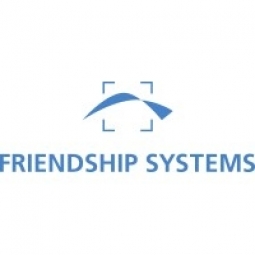FRIENDSHIP SYSTEMS

概述
|
总部
德国
|
成立年份
2003
|
公司类型
私营公司
|
收入
< $10m
|
|
员工人数
11 - 50
|
网站
|
公司介绍
FRIENDSHIP SYSTEMS provides software solutions and services for the design and shape optimization of ship hull forms, propellers, and other components for marine systems, leveraging highly automated computational fluid dynamics (CFD) analysis.
Our passionate computer scientists, mathematicians, and engineers develop the software system CAESES® and advise and support our customers in creating high-performance products. CAESES® is made for simulation engineers, designers, and anyone who is interested in intelligent surface modeling for automated shape optimization.

Supplier missing?
Start adding your own!
Register with your work email and create a new supplier profile for your business.
实例探究.
Case Study
Axial Fan Optimization Workflow: A Case Study of Turbomachinery Design Optimization
The case study revolves around the optimization of an axial fan's design using TCFD® and CAESES® software. The primary challenge was to develop a new, highly efficient fan or improve the parameters of an existing one. The existing axial fan had specific parameters, including a diameter of 280 mm, RPM of 3000, maximum power of 100 W, maximum pressure of 410 Pa, maximum air capacity of 1100 m3/h, and peak efficiency of 69%. The study aimed to maximize the fan's efficiency in the range of flow rates from 576 m3/h to 1296 m3/h and increase the air flow capacity. The challenge also involved creating a smart and efficient turbomachinery design optimization workflow by connecting the two software packages, TCFD® and CAESES®.
Case Study
Advanced Turbomachinery Blade Design with CAESES®
The design of turbomachinery blades is a complex process that requires a high level of precision and customization. The challenge lies in creating robust and flexible parametric models that can be integrated into existing workflows. The models need to consider geometric and manufacturing constraints, and should be capable of reducing the total number of parameters. Furthermore, the design process should allow for comprehensive tuning possibilities of shape details to better control local flow phenomena such as cavitation or swirl. The preprocessing for all design variants should be done only once, and the entire process should be geared towards automation for efficient shape optimization.





